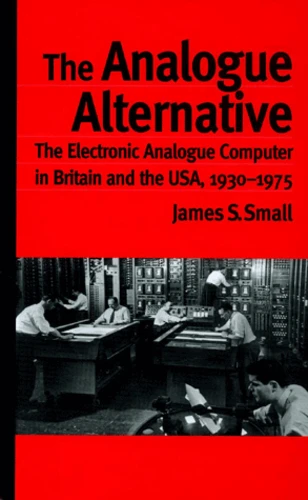The Analogue Alternative. The Electronic Analogue Computer In Britain And The Usa, 1930-1975
Par :Formats :
Définitivement indisponible
Cet article ne peut plus être commandé sur notre site (ouvrage épuisé ou plus commercialisé). Il se peut néanmoins que l'éditeur imprime une nouvelle édition de cet ouvrage à l'avenir. Nous vous invitons donc à revenir périodiquement sur notre site.
- Nombre de pages322
- PrésentationRelié
- Poids0.595 kg
- Dimensions15,6 cm × 23,5 cm × 2,4 cm
- ISBN0-415-27119-3
- EAN9780415271196
- Date de parution01/10/2001
- CollectionStudies history of science
- ÉditeurRoutledge
Résumé
We are in the midst of a digital revolution. Whether we are aware of it or not, we are surrounded by digital technology, such as digital 'film', audio systems, computers and telephones. Yet, until recently, the majority of electronic appliances used in everyday life have been analogue technologies. From the late 1940s until the 1970s, in the world of computing, analogue technology was a genuine alternative to digital and the two competing technologies ran parallel with each other. During this period, a community of engineers, scientists, academics and businessmen continued to develop and promote the analogue computer. At the height of the Cold War, this community and its technology saw considerable success in meeting the urgent demand for high-speed computing in the design and simulation of rockets, aircraft and manned space vehicles. The Analogue Alternative tracks the development, commercialisation and ultimate decline of the electronic analogue computer in Britain and the USA. It examines the roles played by technical, economic and cultural factors in the competition between the alternative technologies, but more importantly, James Small demonstrates that non-technical factors, such as the role of 'military enterprise' and the working practices of analogue engineers, were crucial in analogue's success but also, in its demise. This book will be of interest to students and scholars of the history and sociology of science and technology, particularly computing. It will also be relevant to those interested in technical change and innovation, and the study of scientific cultures.
We are in the midst of a digital revolution. Whether we are aware of it or not, we are surrounded by digital technology, such as digital 'film', audio systems, computers and telephones. Yet, until recently, the majority of electronic appliances used in everyday life have been analogue technologies. From the late 1940s until the 1970s, in the world of computing, analogue technology was a genuine alternative to digital and the two competing technologies ran parallel with each other. During this period, a community of engineers, scientists, academics and businessmen continued to develop and promote the analogue computer. At the height of the Cold War, this community and its technology saw considerable success in meeting the urgent demand for high-speed computing in the design and simulation of rockets, aircraft and manned space vehicles. The Analogue Alternative tracks the development, commercialisation and ultimate decline of the electronic analogue computer in Britain and the USA. It examines the roles played by technical, economic and cultural factors in the competition between the alternative technologies, but more importantly, James Small demonstrates that non-technical factors, such as the role of 'military enterprise' and the working practices of analogue engineers, were crucial in analogue's success but also, in its demise. This book will be of interest to students and scholars of the history and sociology of science and technology, particularly computing. It will also be relevant to those interested in technical change and innovation, and the study of scientific cultures.

